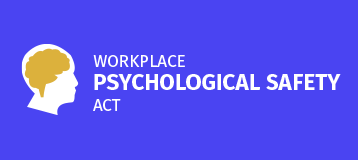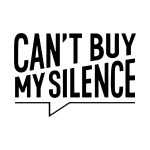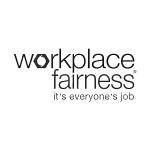Heal Your Scars, Restore Your Health
Abuse can cause invisible brain injuries. Yet because our brains are remarkably adept at repairing all kinds of traumas and injuries, we can heal our scars and restore our health.
Dr. Jennifer Fraser shares evidence from doctors, psychiatrists, neuropsychologists, and neuroscientists that shows the harm done by abuse to your brain and how you can heal your neurological scars and restore your health.
Saturday, April 20, 2024
12-1:15pmET
How to navigate the landmines of the corporate landscape
Dan Goodman is a fierce employee advocate who focuses on employment agreements, restrictive clauses, severance, performance improvement plans (PIPs), and more. He'll answer your questions about the unwritten corporate rules so you know what's really going on with your employer.
He combines a unique approach of business acumen, negotiating, and strategic coaching to help employees navigate the landmines of the corporate landscape to support and empower them to stand up for themselves.
He is a seasoned executive bringing 30+ years of experience to his passion, Dan Goodman Employment Advisory (DGEA). The company has served 750+ clients since 2023.
Saturday, May 18, 2024
11am-12pmET
pressure lawmakers to pass protections
We’re working to introduce the Workplace Psychological Safety Act in nearly 20 states in 2025. Sign the petition to join our email list to learn about action you can take in 2025.
Massachusetts
We just MADE HISTORY in October 2023 in Massachusetts with the largest number of advocates testifying together for workplace anti-abuse legislation. On January 25, 2024, the bill moved to Senate Ways & Means but with another bill that does not plug up enough loopholes in the law to give employees adequate protections. It is also regressive given progress with sexual harassment law.
Rhode Island
Since the Workplace Psychological Safety Act passed its State Senate last year, Rhode Island has the potential to become the first state in the U.S. to pass it. This year, we want to make sure it passes the House, too, and sails onto the Governor’s desk for signing. Passing the bill in one state will make it easier to pass in others. Rhode Island has two public hearings, one for the Senate Labor Committee and one for the House Labor Committee. The Senate Labor Committee hearing was held on Wednesday, March 20, 2024. A second Senate Labor Committee hearing will happen followed by a Senate floor vote, House Labor Committee hearing, and House floor vote.
Workplace psychological abuse is about power and control
Something’s off, but you can’t quite put your finger on it. You expect your boss and co-workers to support you to do the work you were hired to do and expect to be treated with dignity and respect.
But that’s not what's happening. Your boss or co-worker talks down to you. It seems you can’t say or do anything right. Your boss falsely accuses you, isolates you, or sabotages your job or career.
You've been targeted by a workplace bully.
You try to please the abuser or try to figure out how you need to change. But nothing works. The abuse continues. The bully is threatened by your competence, social skills, and any other good qualities you have. They either keep you immobilized under their thumb or do everything in their power to get rid of you.
You want to respectfully confront the abuser and tell them their behavior is unacceptable but are afraid they'll come back at you even harder next time. The power imbalance silences you into submission to keep the peace and your paycheck.
The bully doesn’t let up, and you report the problem to management. You expect the organization to intervene and either discipline or get rid of the abuser, but neither happen. Delay after delay. Nothing is ever done about the bully. Something isn’t off. Everything is off.
You're in a toxic work environment.
For the majority of targeted and victimized employees, the psychological abuse doesn’t stop until they leave. If toxic workplace behavior isn’t dealt with effectively in the short term, employees are likely in a toxic work environment — where higher-ups prioritize avoiding corporate liability over human well-being.
Employers aren’t currently liable for the psychological safety of their employees — nor do they want to be. So the employer further abuses the employee with a willful disregard to the problem (mobbing). They choose to ignore the problem and make reporting employees go away instead.
In toxic work environments, employers deceive and conspire against employees who report abuse to avoid the threat of liability. If employees fight them, they fight harder. With legal resources at their fingertips, they win most of the time with illegal discrimination. The mission of mobbing aka organizational bullying is to break you psychologically, leaving no fingerprints.
There are three typical outcomes for bullied and mobbed employees:
- They leave voluntarily from the incompetence of the bully, the overall toxic culture, and/or the significant health harm from the abuse that has immobilized them after remaining under the silent killer stress waiting for organizational resolve that is willfully denied.
- They are fired by the employer because they can no longer perform their duties due to the significant health harm.
- They die from the stress.
These inhumane workplace practices violate basic human rights without account. The majority of targeted and victimized employees never realize what’s happened to them until after they leave the toxic work environment. In the aftermath, the realization of the premeditated health harm and job loss leads to further traumatic psychological injury.
But workers shouldn't have to choose between their mental health and a paycheck.
We need a law.
Psychological abuse at work is an epidemic that affects an estimated 48.6 million Americans according to a 2021 Workplace Bullying Institute study.
The mistreatment often leads to serious, long-term physical, psychological, emotional health harm and economic injury, as many employees suffer severe financial loss after losing their jobs and careers, too ill to return to work. PTSD, a brain injury, and stress-induced illnesses are common consequences as is suicide and suicide ideation. Employees die.
We have regulations at work for environmental safety. We have regulations at work for physical safety. It has been the historic practice in the United States to legislate issues of employee exploitation. The psychological safety of employees is of no less importance.
We need a law NOW.
Workplace abuse and mobbing
Understand the basics of this epidemic intertwined with discrimination.
Write your legislators
We're building an army of workers who say enough is enough when it comes to workplace abuse.
Throughout history, those in power have written the rules to keep themselves in power. We want to change those rules to say:
Workers deserve — and demand — psychological safety.
Our policies and actions must support workers as people.
Employers are responsible for treating workers with dignity.
We can change the workplace rules if we stand in our collective power.
Let your state legislators know you want change.
Workplace Psychological Safety Act or an initial step
The National movement
Join our growing army.
pull back the curtain on
workplace culture
A game-changer for employer accountability, Culturama is a tool that automatically analyzes 4.8 million job review board opinions to help you compare the largest 1,500 global organizations on work-related problems so you can make informed career decisions.
Review the website on Product Hunt to boosts its rankings so more people know about it and employers take action based on it so we can make work cultures safer from the outside.
Join the community of
thousands of workers
Get notified when to take quick action with state legislators,
join a growing community on Facebook,
and get perks as a member to learn how to advocate.







